The Storytelling Ironwork of New Orleans
Discover the hidden histories told by the French Quarter’s balconies.
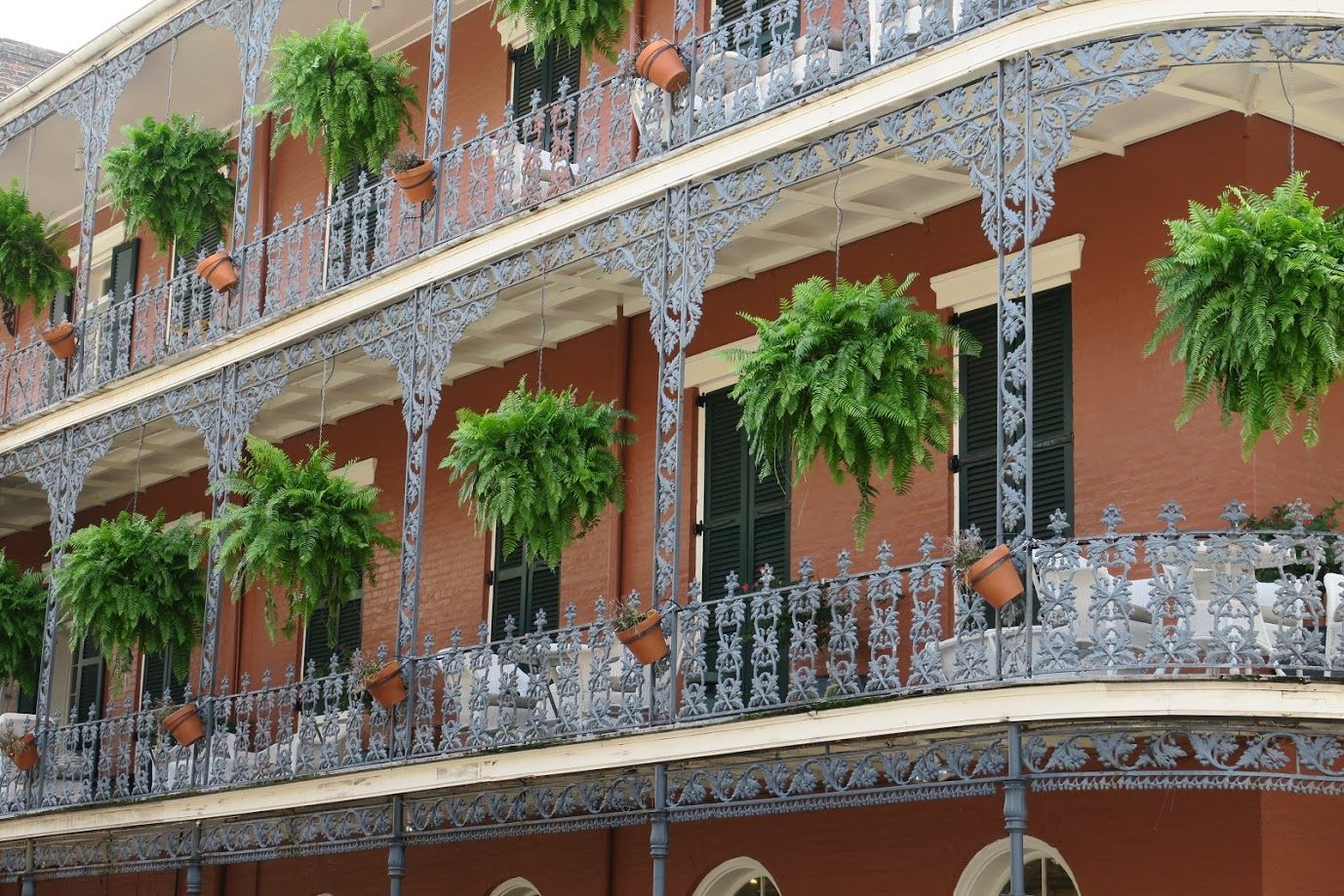
The next time you’re in the French Quarter of New Orleans, Louisiana, and you fancy hearing a story about the dramatic life of a famed 19th-century businesswoman, or a Spaniard whose taste in design has become a classic for all the wrong reasons, all you need to do is look up: the Vieux Carré’s iron balconies are plenty talkative.
Walking through the French Quarter, the overhanging balconies soften Louisiana’s heat, their railings woven together like vines frozen in time. Cast iron balconies are at once bulky and intricate, their patterns tangled with flowers, leaves, and other motifs from nature. Wrought iron balconies tend to be simpler, but they make up in artistry what they lack in complexity—shaped by hand, they seem slender and full of movement.
As with Dixieland, gumbo, and Louisiana Voodoo, the style of wrought and cast iron in New Orleans is the product of a unique blend of cultural influences. Although undoubtedly inspired by the aesthetic of the French and Spanish colonizers, historian Marcus Christian traced most of the city’s early ironwork back to enslaved people from West Africa. These men first apprenticed under French blacksmiths in the early 18th century, then under Spaniards and Americans as the colony changed hands. Some were even able to buy their freedom, according to Christian, continuing the trade as free men until they were driven away by the Civil War and competition from Irish and German immigrants.

Take in the cast iron balconies of the Pontalba Buildings, and you can witness this multi-cultural synthesis for yourself. Here, Micaela Almonester y Rojas, Baroness de Pontalba, immortalized her story in the heart of the French Quarter. The only child to a powerful Spanish civil servant who died when she was a toddler, Micaela began construction of the Pontalba Buildings in 1849 on land inherited from her father. The buildings, which flank Jackson Square on the northeast and southwest sides, each take up a block and are girdled on the second and third floors by an endless web of filigree and flourishes.
Within the whorls of the balcony’s pattern are the initials “AP,” or “Almonester” and “Pontalba,” the two families that were joined together by the marriage that nearly cost Micaela’s life. In 1811, she was married off to her milquetoast cousin, Joseph-Xavier Célestin Delfau de Pontalba, and dragged from New Orleans to his family’s estate in France. Her father-in-law, the Baron de Pontalba, was desperate to get his hands on her inheritance, which he could legally claim if she left her husband. For years he tried to make her marriage miserable, but his attempts to chase her off were unsuccessful. Unstable and enraged, he shot her four times at point-blank range. When his murder attempt failed, he retired to his study and turned the pistol on himself.
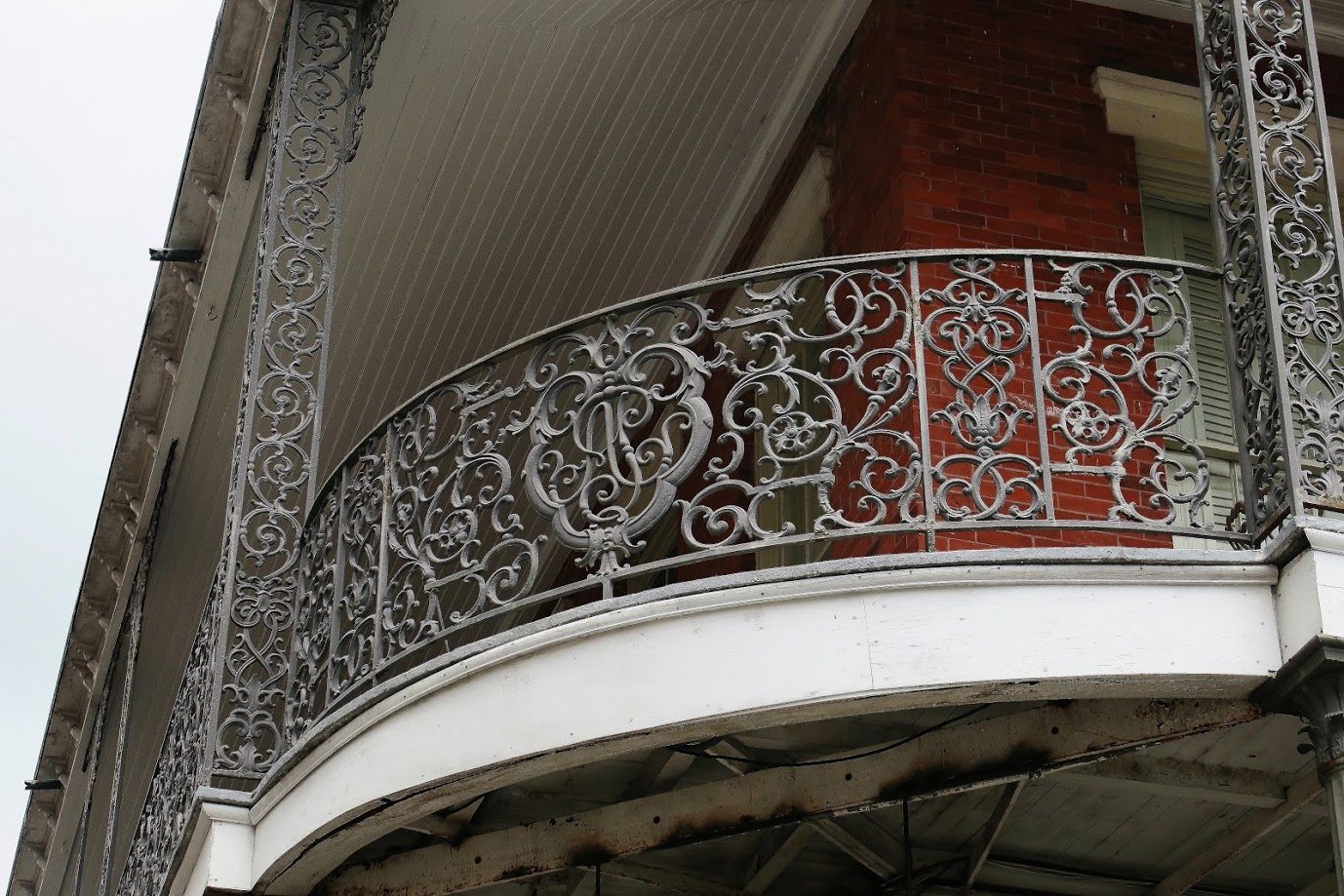
The newly appointed Baroness de Pontalba was granted separation from her husband and returned to New Orleans. She spent the next few years converting Jackson Square from a military parade ground into a garden and designing the architecture for her eponymous buildings.
Some historians argue that it is not just the story of the Baroness that appears in the decorative ironwork of her buildings. Enslaved people from West Africa, who had by then been working in the blacksmithing industry for over a century, also left signs of their presence in the balconies. Tucked between each set of “AP” initials, in the bottom center of the balcony railing, is a design resembling two interlocked Gs that some claim is an Adinkra symbol. Adinkra symbols are a tradition from West Africa that represent different values and proverbs. The symbol featured here is likely “hye won hye,” which stands for endurance, imperishability, or “that which does not burn,” and may be in reference to the fires of 1788 and 1794 that razed great swaths of the city.
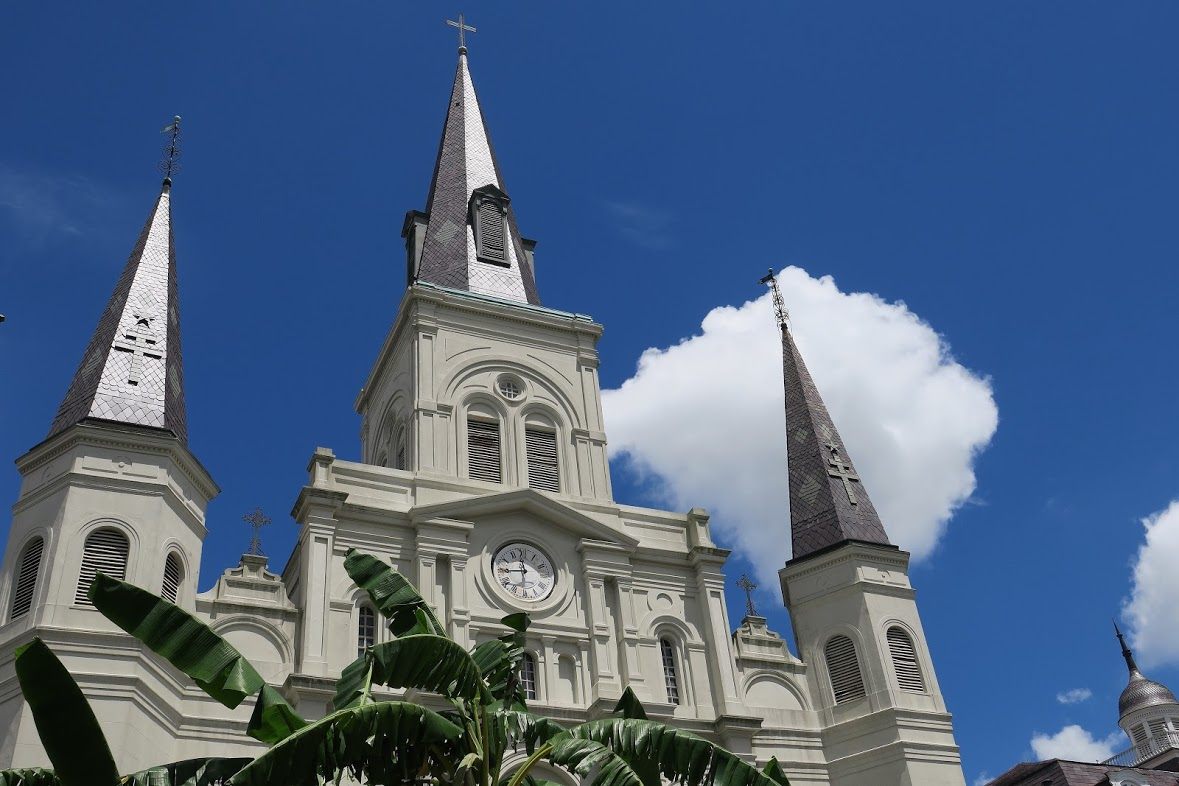
The Pontalba balconies fall in the shadow of more ironwork with something to say. St. Louis Cathedral rises from the northern edge of Jackson Square, its central bell tower attended by two shorter steeples. Though difficult to see from the street, each of these otherwise silent sentinels bears a message. The supple loops of wrought iron on top are thought to be a combination of two more Adinkra symbols.
The first, “asase ye duru,” resembles a heart mirrored vertically. Its translation, “the Earth has weight,” asserts that Mother Nature is to thank for all abundance and life, and should be taken care of accordingly. The second and most prominent symbol is a stylized heart known as “sankofa.” Its literal translation is, “return and get it,” but it is also associated with the proverb, “It is not wrong to go back for that which you have forgotten.” Although the proverb has a multifaceted significance in West African philosophy, in simplest terms it means that success in the future is dependent upon reclaiming wisdom from the past. Both are no doubt at home on top of the cathedral, as repentance and stewardship are both important concepts in the Catholic tradition, but they also feature elsewhere around the Quarter on many other balconies, gates, and doors.
Aside from life stories and religious teachings, the practice of incorporating symbolism into ironwork was also a popular way of advertising business or personal interests, such as grape vines on the house of a wine seller. There are even some stories of people using it to declare marital status. Vance Muse, author of New Orleans Decorative Ironwork, notes, “One apparently eager father chose the medium of cast iron to announce his daughter’s availability to suitors, for he filled the balcony railing outside her bedroom with cupids and arrows.”

Jean Baptiste LeBranche may not have been so inventive, although his home at the corner of St. Peter and Royal, a block northwest of the cathedral, is now one of the most photographed buildings in town. Erected by the sugar planter in the early 1800s, the rounded cast iron balconies feature a popular design of oak leaves and acorns. The pattern frames the space from above, giving off the impression of a tree’s canopy, and is divided by columns that resemble snaking trunks. According to author Cara Chastang Barnett, the oak leaf and acorn stood for food and shelter, or health and hospitality, but LeBranche also picked the design to honor his name, which means “the branch.”
Along Chartres Street, within eyesight of the cathedral, is the home of a Spaniard whose taste in wrought iron design hasn’t aged so gracefully. Bartholeme Bosque built his home in 1795, its wrought iron railings highlighted in New Orleans Decorative Ironwork for the delicate, baroque scrollwork that make up the homeowner’s initials. The blacksmith, Marcellino Hernandez, was also the artisan responsible for the balconies of Le Petit Théâtre Du Vieux Carré and the Cabildo, both found on the block between Bosque’s house and the cathedral. His handiwork on the Cabildo was noted by historian Samuel Wilson to be “perhaps the finest of the Spanish period.”
Hernandez’s mastery over hand-wrought scrollwork, however, is not what catches the attention of present-day admirers. Instead, tour guides have been known to point out the motif surrounding Bartholeme Bosque’s initials, jokingly referring to it as the “cannon with two shots” design. What may have once been an innocent pattern of the 1700s has grown to suggest something entirely different to the modern eye.
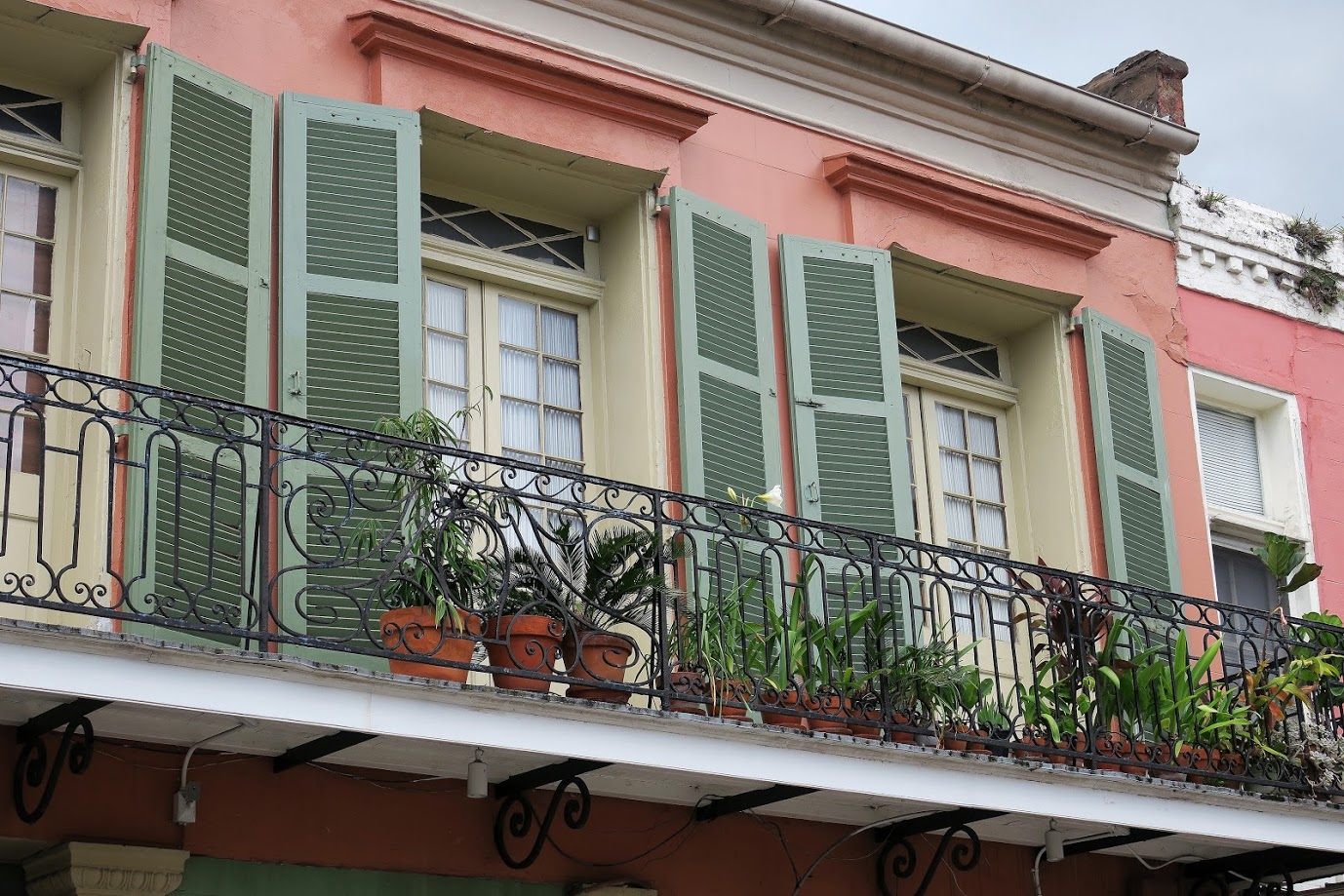
Ironwork isn’t only a privilege of the living. The cemeteries of New Orleans, known as “cities of the dead,” are just as well-appointed. Tombs are often fenced off with custom gates featuring the interred family’s name. In her book Cast Iron and the Crescent City, historian Ann Masson notes that angels, weeping willows, inverted torches, and lambs have all been popular designs for the departed.
An example of this is in St. Louis Cemetery No. 1, at the tomb of the Battalion of Artillery. There rests a number of soldiers who served under Andrew Jackson during the War of 1812. One of the final major battles was fought in New Orleans, and, although outnumbered by the British, the Americans won with a punishing blow of musket fire and cannons. It comes as no surprise that the artillery battalion’s tomb is adorned with wreaths for victory and inverted torches for death, but it is also surrounded by a fence embellished with, among other things, cannons and cannon balls with flames.
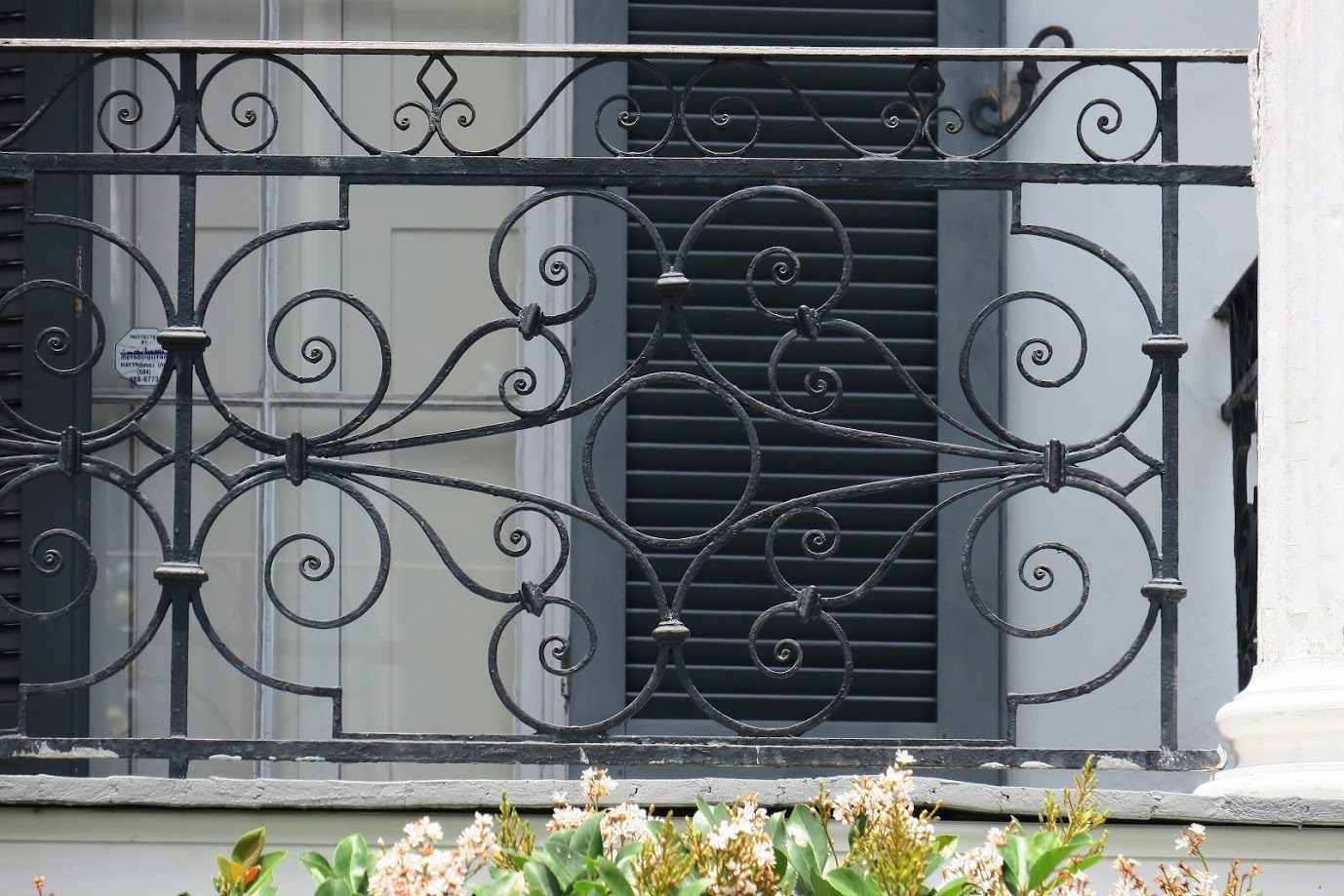
New Orleans’s history is sometimes as hidden as the courtyards of the French Quarter’s townhomes: strolling in the shade of their balconies, you might never guess that a lush garden exists on the other side of the wall—or that insights and histories from 200 years ago are preserved in the wrought iron fences. If what’s already been written about the city fails to answer a question, maybe it’s time to consult the annals of the deliberate tracery that linger just overhead.





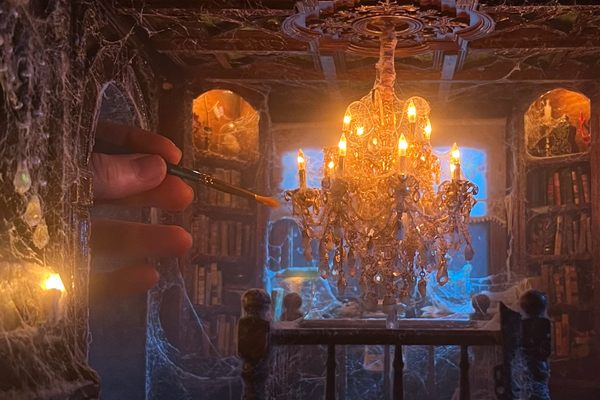



























Follow us on Twitter to get the latest on the world's hidden wonders.
Like us on Facebook to get the latest on the world's hidden wonders.
Follow us on Twitter Like us on Facebook